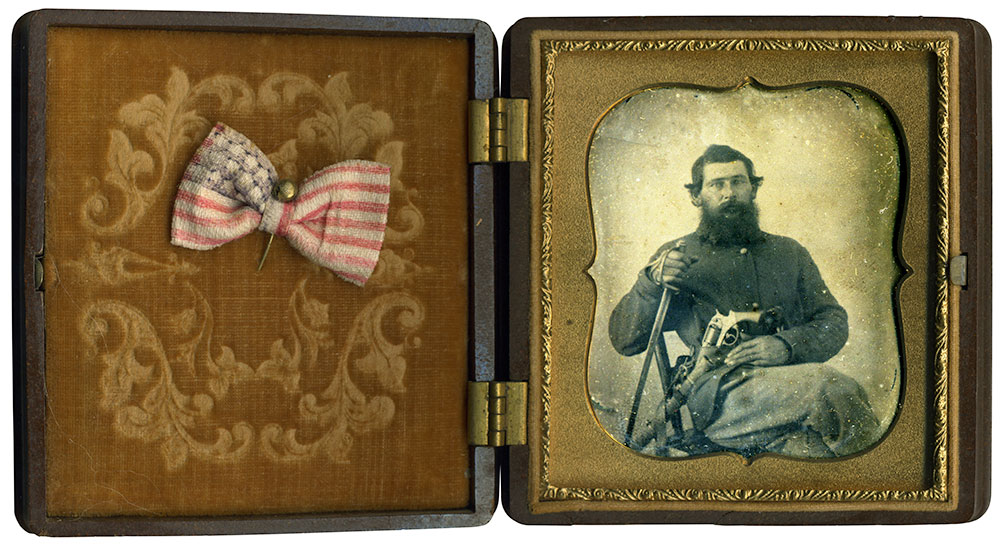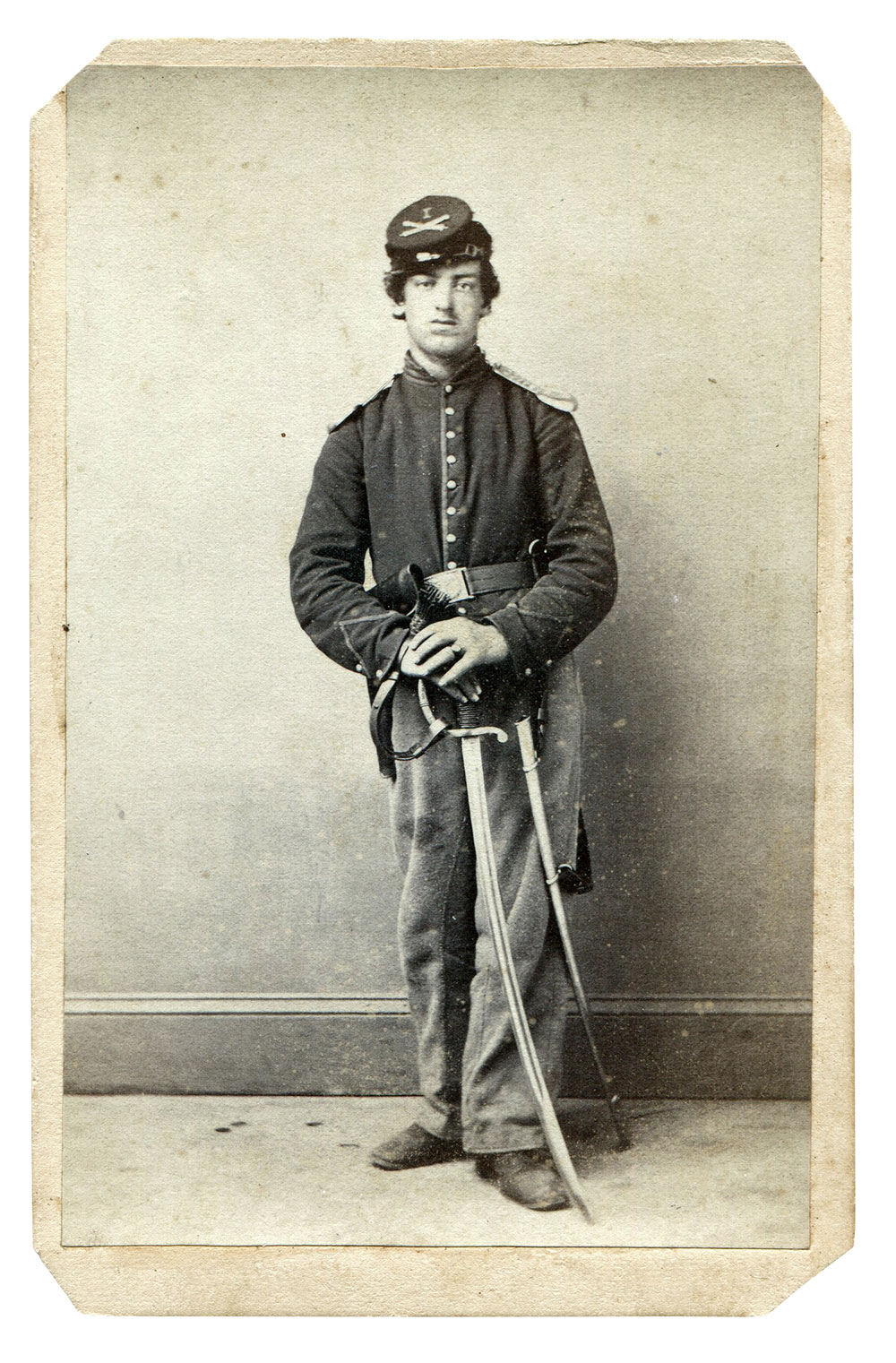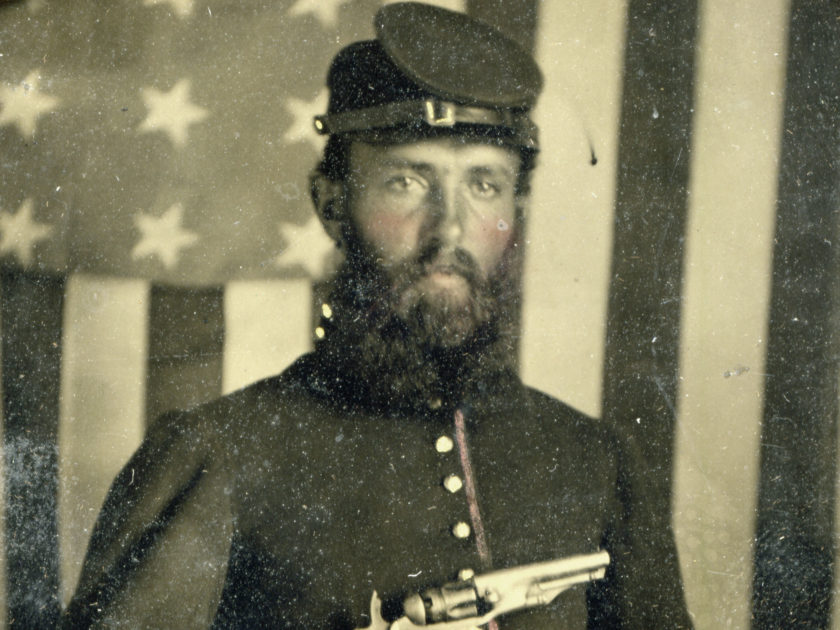
A bewhiskered Union artilleryman brandishes a .36 caliber Model 1862 Colt Police Revolver. The hammer is pulled back, though his finger rests only on the trigger guard. The Stars and Stripes in the background enhances his patriotic fervor.

A drummer boy stands with his sticks at the ready. The presence of a knapsack, blanket and bedroll suggest that he is equipped for the rigors of active campaigning. Beneath the red tinting on the front of his cap is his company letter, I.

When William K. Taylor donned Union blue in 1861, he could not have known that his regiment would become one of army’s hardest fighting outfits. The 50th Pennsylvania Infantry participated in some of the war’s bloodiest conflicts, including the battles of Antietam, Spotsylvania and Cold Harbor. Taylor, who served in Company K, was among the lucky survivors. He mustered out with his comrades in July 1865. Back home in Bradford, Pa., he reunited with his wife, Emma, whom he had married while on furlough during the winter of 1864-65. Taylor’s good fortune ran out six years later. In 1871, he was mortally injured after an explosion in a powder shed at a coalmine where he worked as foreman. He was 29. His pregnant wife and a young son survived him. All four images were discovered at separate locations at different times.

A federal trooper grips his Model 1860 light cavalry saber, and a .44 caliber Starr revolver protrudes from a holster attached to his waist belt. A second revolver is visible opposite the Starr. The plain chair in which he sits and the unadorned backdrop behind him suggests that this portrait was made in camp. The patriotic bow pinned to the velvet lining of the case proclaims his Northern loyalty.

On May 5, 1864, the federal 7th Maryland Infantry suffered heavy losses during the first day of The Wilderness. Casualties totaled 71, including 17 men missing in action. Among those who could not be accounted for was Jacob Nicholas Haupt of Company G. A carpenter who hailed from Middletown, a village outside Frederick, Md., Haupt had enlisted in the summer of 1862, and received his corporal stripes in early 1863. A comrade recalled what happened to Haupt in The Wilderness: “He had taken a position behind the butt of a tree. The enemy could be seen through the underbrush. Loading and firing, he didn’t see the enemy come in on the left flank, which was forced back, and he was left alone, the enemy getting in his rear. There was no chance to escape and he was taken prisoner, sent to Andersonville prison, where he was confined in the stockade of square timber, about twenty feet high, with no shelter but what little they could prepare for themselves.” Haupt survived Andersonville and returned to his regiment on April 17, 1865. He mustered out with his comrades in May, and returned to his Maryland home. He married in 1869, fathered five children, and lived until age 72. He died of stomach cancer in 1913.

A light artilleryman rests his hands upon the hilt of his saber. The leather strap that connects the handle to the soldier’s wrist is a sword knot. This bond prevented the soldier and his weapon from becoming separated in battle. The hand, detail left, is slid between the two straps and locked in place round the wrist by the slider.
SPREAD THE WORD: We encourage you to share this story on social media and elsewhere to educate and raise awareness. If you wish to use any image on this page for another purpose, please request permission.
LEARN MORE about Military Images, America’s only magazine dedicated to showcasing, interpreting and preserving Civil War portrait photography.
VISIT OUR STORE to subscribe, renew a subscription, and more.

